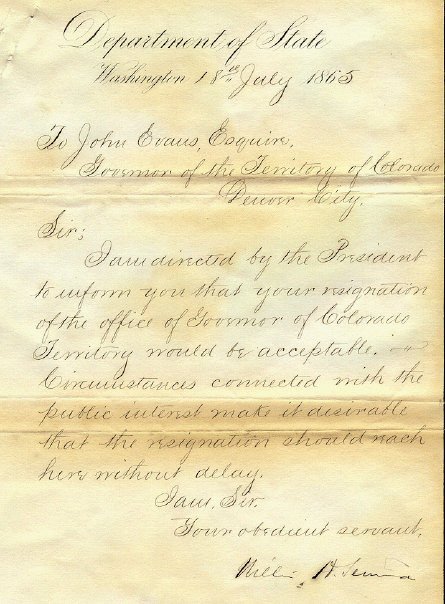Northwestern to investigate founder’s connection to historic massacre
By Lewis Wallace

Northwestern to investigate founder’s connection to historic massacre
By Lewis Wallace
“I got on the internet and googled, and within 30 seconds I was shocked,” Fine said. He found out Evans was governor of Colorado in 1864, the year of the Sand Creek Massacre.
Colorado cavalrymen murdered more than 150 civilian Cheyenne and Arapaho Indians in one of the most notorious mass killings in U.S. history.
“Children killed in front of their mothers, women who had their breasts cut off, I mean just a horrific story,” Fine said, calling it one of most significant events of genocide in U.S. history.
Colorado’s frontier government was effectively at war with the Cheyenne’s and the Arapahoes, but the government had offered up the Sand Creek camp as a refuge for tribal members who were willing not to fight white settlers and railroad men. In other words, the massacre amounted to a bloody attack on a peaceful refugee camp.
Evans was not present at Sand Creek – he was out of the state on business – but as the territorial governor he somehow approved the action. He was removed from his post as governor after Congress caught wind of the events, but he remained president of Northwestern’s Board of Trustees for thirty years after the fact.
The City of Evanston is Evans’ best-known namesake, and his fortune as a railroad mogul played a major role in Northwestern’s early development. Multiple emeritus positions and the school’s alumni house all carry Evans’ name.
That’s why Northwestern Senior Adam Mendel took note when he saw Evans’ name connected to Sand Creek in readings for a class. After further researching Evans and finding out that he was considered culpable for the massacre, Mendel got together with members of the Native American and Indigenous Student Alliance to demand an explanation from the university as to why this part of Evans past was not in the biography of Evans on the university website.
Mendel said the students wanted “recognition of John Evans’ role in Sand Creek and the way in which his profits from clearing the land of the Native population led to the development of the school.”
They put together a petition that asks for the establishment of a Native American studies program and a scholarship fund for Cheyenne and Arapaho students. The group also wants a permanent memorial built on campus with input from the tribes.
The university responded in mid-February by announcing a committee of seven scholars to research Evans. The committee plans to release a report in 2014 on Evans’ connection to the massacre and on links between Evans’ financial contributions his policies towards Native tribes as governor of Colorado.
“The year 2014 will mark the 150th anniversary of Sand Creek, so it is appropriate to assess how and what we report about John Evans as part of our institutional history, and if and in what way we should continue to recognize his contributions to the University,” Provost Daniel Linzer said in a statement. “Although Sand Creek occurred 13 years after the establishment of Northwestern, we would like to know in detail the nature of John Evans’ relationship with the University when he was territorial governor and afterwards.”
“I’m ecstatic that the committee is going to be formed,” Mendel said.
He’s disappointed that the committee does not include students or any members of the Cheyenne and Arapaho tribes, but said it’s a great start.
Fine has high hopes for where the research could take the university.
“What do we owe the Cheyenne and Arapaho, what do we owe native students, what do we owe the students today in terms of remembering our own traumatic history. How do you memorialize trauma?” Fine asked.
He cites the work of Brown University, which formed a committee in 2003 to address historic links to slavery at the university. In 2007, Brown announced it would give $10 million in an endowment to local public schools as a form of reparations.
Fine hopes Northwestern will eventually do something similar by helping Native American students get access to higher education. Recent numbers show just seven percent of Native American kindergarteners end up graduating from college.
Follow Lewis Wallace on Twitter.